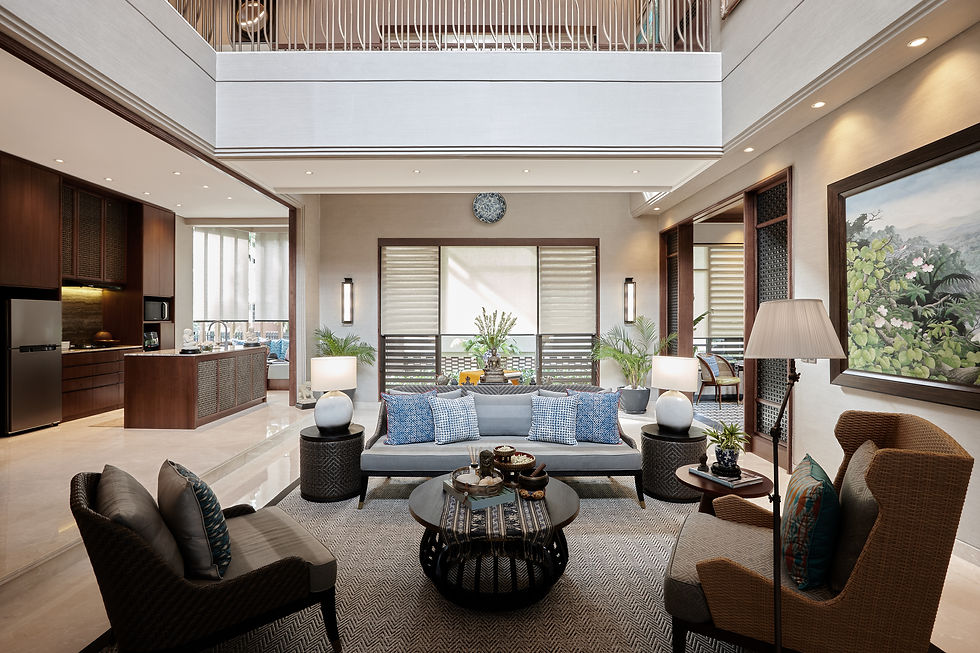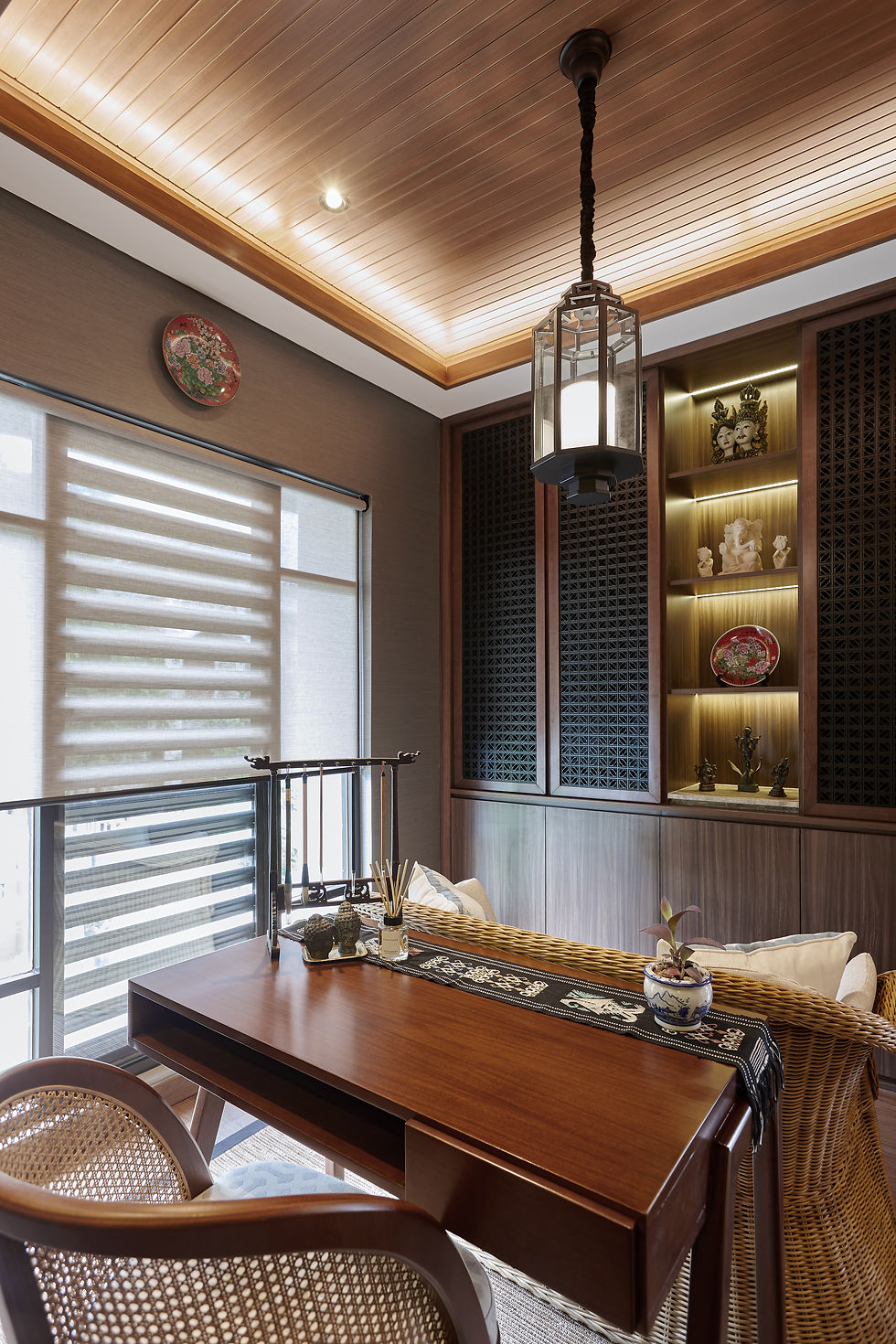Cinere Residence Project.
- juliaozsarac
- Feb 1, 2022
- 4 min read
Updated: Mar 2, 2022
A newly completed project by renowned Indonesian Interior Designer Hans Susantio.
International Luxury Residential Interior Design Project.

Indonesia is an archipelago consisting of five large islands and over 17,000 small islands, all located between the Indian and Pacific oceans. Jakarta, the current capital of the country is located on the North-Western coast of the large Java island. It is the most populous city in the country and has expanded rapidly over the years, absorbing many neighbouring villages, converting them into city suburbs. The country's natural geographical conditions and rich history makes it a melting pot of many cultures, such as Javanese, Malay, Chinese, Arab, Indian and European. There is an incredible diversity in languages, cuisine, as well as local architecture and design.
Hans Susantio, one of the most prominent Indonesian interior designers, has recently completed a new project in the suburb of Jakarta. The client, who is planning to use this property as a retirement home, has given a lot of freedom to the designer, allowing Hans to express his creativity, whilst honouring cultural background and personal preferences.

The influence of oriental culture is present in every detail of the project. The client own art collection was carefully curated by Hans and skilfully integrated into the interior, honouring the client's love of the Indonesian traditional painting. The art collection includes highly stylised Indonesian paintings depicting traditional life in the villages. There is also a dedicated area for worship and meditation rituals, commemorating owners regular Buddhist practice. The Master Bedroom entrance door is skilfully hidden in a large vertical wall panel, creating a natural flow and harmony with the mezzanine's overall architecture.

The rich cultural heritage of art and handicrafts is one of Indonesia's true national riches. Indonesian painting before the 19th century was mostly restricted to the decorative arts, considered to be a religious and spiritual activity. As an art form, painting was really developed in the late 19th and early 20th centuries. The paintings are typically characterised by their delicacy and serenity of expression. One of the owners most favourite still life paintings resides on the feature wall of the room.
It would be impossible to live in Indonesia and not be exposed to one of the country's most highly developed art forms, Batik. The word batik is derived from the word 'ambatik' which means 'a cloth with little dots'. The suffix 'tik' means little dot, a point or 'to make dots'. Some historians believe that batik was originally reserved as an art form for Javanese royalty. The fabrics must be a high thread count and densely woven, so that the intricate design qualities of batik can be maintained. The sophisticated royal deep blue textile of the cushions with batik print is harmonised well with subtle earthy taupe tones of soft furnishings and brown walnut veneers. Rattan feature on the headboard and the sideboard front panels adds gentle accents to the design concept. The overall geometry of the walking-in closet and bedroom is well orchestrated by the designer, creating a beautiful perspective and feeling of spaciousness.

Due to the tropical climate, air conditioning is an essential part of living, and integrating it into the interior without compromising the design concept is a tricky task. In this room, the AC was hidden behind the carved wood panels featuring a beautiful traditional Kawung design - one of the oldest batik motifs. The pattern consists of a four-lobed stylised flower, based on the Areca Palm blossom. The cross-section of the palm fruits and their seeds are also said to inspire the design of this motif. The study has a sense of calmness, and wooden panels on the ceiling soften the sound and add warmth to the room.

Japanese colonial structure of the building offers a perfect indoor-outdoor blend, creating an atmospheric tropical feel. The architecture of the building responds to the country's tropical climate by orienting spaces to prevent overheating from direct exposure to the sun. The designer skilfully optimised the internal architecture, allowing plenty of space for air and light, employing simple, and everlasting timeless design principles.

This entrance space has created an open and relaxed atmosphere, an in-between space, which allows air and daylight freely enter into the living area. Hans has worked towards the integration between indoor and outdoor areas by employing the concept of visual continuity across the living space. Large sliding doors and glass windows along the perimeter walls blur the boundary between the interior and the exterior environments. Banana leaf plants bring the outdoor flora inside of the apartment.

Using local materials and traditional techniques was one of the key preferences during the design brief. According to the designer, one of the most distinctive features of old buildings in Indonesia is the Tegel floor. Tegel cement tiles first became popular as a flooring material during the Dutch East Indies era, in addition to marble, solid wood parquet, and stone. Hans has chosen to cover almost the whole entrance and a foyer area in the batik-like pattern, creating a classic, authentic, and traditional character.

On a global scale, Jakarta is facing challenges like no other city: the Indonesian government says that the country needs a new capital because Jakarta is threatened by route flooding, heavy pollution and traffic congestion, earthquakes, and is rapidly sinking. The rising sea levels treating to swallow the city as soon as 2050, forcing the Indonesian government to address the issue by relocating the capital to East Kalimantan on the island Borneo. We will have to wait and see how the existing 31 million Jakarta citizens will react to these changes. They may choose to relocate to a new island, or they may decide to build further down inland, expanding the suburb infrastructure. Creating a home sanctuary that offers peace, calmness and serenity is a necessity for the Jakarta residents, counterbalancing the environmental challenges they are facing in their daily lives.

Comments